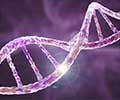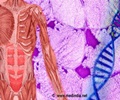Researchers at Massachusetts General Hospital (MGH) have identified and validated two rare gene mutations that appear to cause the common form of Alzheimer's disease (AD) that strikes after the age of 60.

In their report, which will appear in the October 16 issue of Neuron and has been released online, the investigators from the MassGeneral Institute for Neurodegenerative disease (MGH-MIND) describe how the two mutations in ADAM10 increase generation and accumulation of the toxic amyloid beta (A-beta) protein in the brains of a mouse model of AD. The mutations also reduce generation of new neural cells in hippocampus, a part of the brain essential to learning and memory.
"This is the first report to document, in animal models, new pathogenic gene mutations for AD since the reports of the original four genes in the 1990s," says Rudolph Tanzi, PhD, director of the Genetics and Aging Unit at MGH-MIND and senior author of the Neuron paper. "What we found regarding the many effects of these two rare mutations in ADAM10 strongly suggests that diminished activity of this enzyme can cause AD, and these findings support ADAM10 as a promising therapeutic target for both treatment and prevention."
The process leading to the generation of A-beta – which accumulates in characteristic plaques in the brains of AD patients – begins when the amyloid precursor protein (APP) is cut into smaller proteins by enzymes called secretases. A-beta results if APP is first cut into two segments by an enzyme called beta-secretase, and one of those segments is further cut by a gamma-secretase enzyme to release the toxic A-beta fragment. However, processing of APP by an alpha-secretase enzyme – one of which is ADAM10 – cuts right through the A-beta region in APP. So instead of generating the toxic A-beta fragment, cleavage with alpha-secretase produces a protein fragment that has been reported to protect and stimulate the generation of neurons in brain.
An earlier study by Tanzi's team reported finding that either of two mutations in ADAM10 increased the risk of AD in seven families with the late-onset form of the disease. Since ADAM10 was already known to be important to alpha-secretase processing of APP, along with having a role in early brain development, the researchers set out to investigate how the observed mutations might lead to the pattern of neurodegeneration characteristic of AD.
Experiments using several strains of transgenic mice – including lines that express both one of the ADAM10 mutations and an APP mutation that leads to AD-like pathology – revealed the following:
- AD-associated mutations in ADAM10 reduced the release from neurons in the animals' brains of the beneficial protein produced by alpha-secretase processing of APP,
- Reduced ADAM10 activity caused by the mutations increased the generation of A-beta and its accumulation in plaques, along with producing other AD-associated neurodegenerative signs,
- Reduced ADAM10 activity also impaired the generation of new neurons in the hippocampus, one of the areas of the brain most vulnerable to neurodegeneration in AD,
- The AD-associated mutations produce these effects by impairing the correct folding of ADAM10 and interfering with its normal functions. Advertisement
Source-Eurekalert














